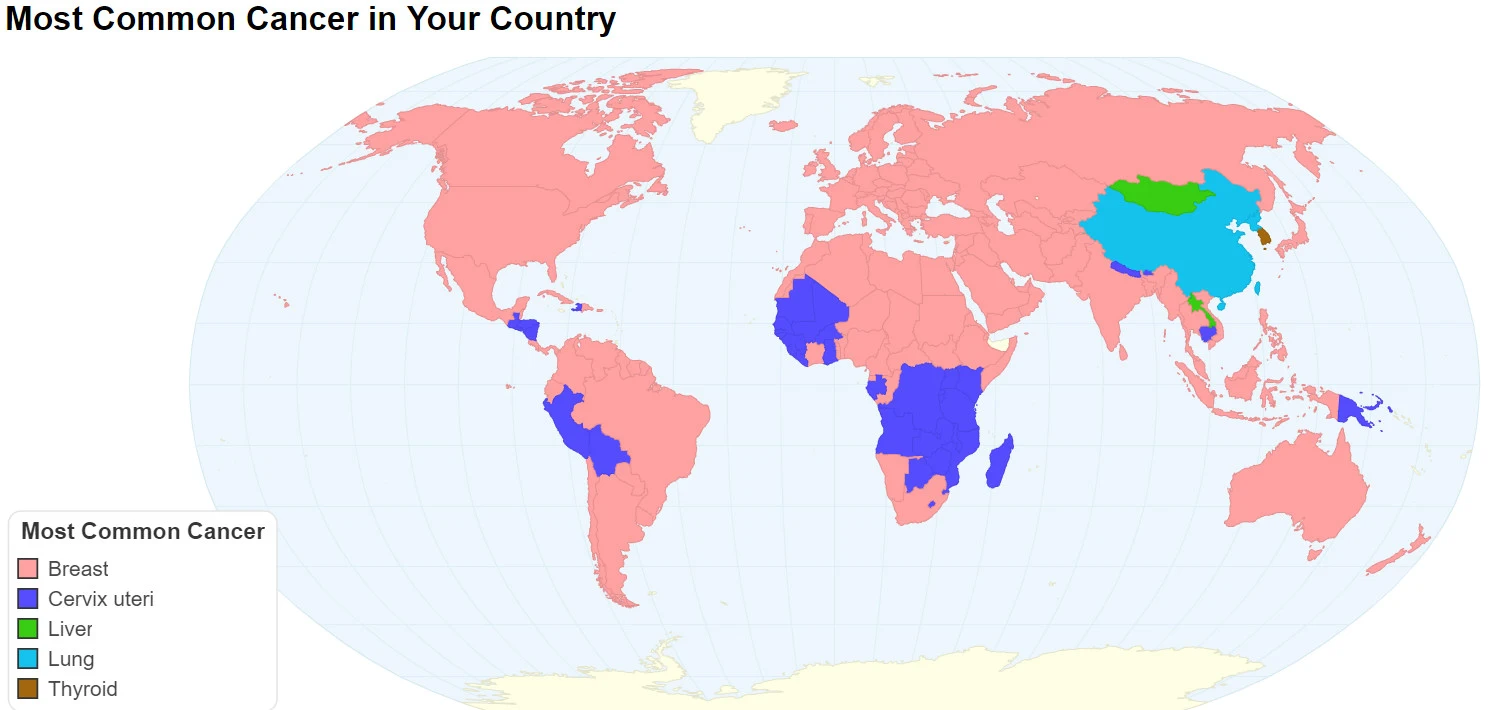Tobacco use is the cause of about 22% of cancer deaths. Another 10% is due to obesity, poor diet, lack of physical activity and drinking alcohol.Other factors include certain infections, exposure to ionizing radiation and environmental pollutants.In the developing world nearly 20% of cancers are due to infections such as hepatitis B, hepatitis C and human papillomavirus.
Over 100 cancers affect humans. The most common types of cancer in males are lung cancer, prostate cancer, colorectal cancer and stomach cancer. In females, the most common types are breast cancer, colorectal cancer, lung cancer and cervical cancer. If skin cancer other than melanoma were included in total new cancers each year it would account for around 40% of cases.
The risk of cancer increases significantly with age and many cancers occur more commonly in developed countries. Rates are increasing as more people live to an old age and as lifestyle changes occur in the developing world.
via chartsbin.com

This post may contain affiliate links. As an Amazon Associate, I earn from qualifying purchases.